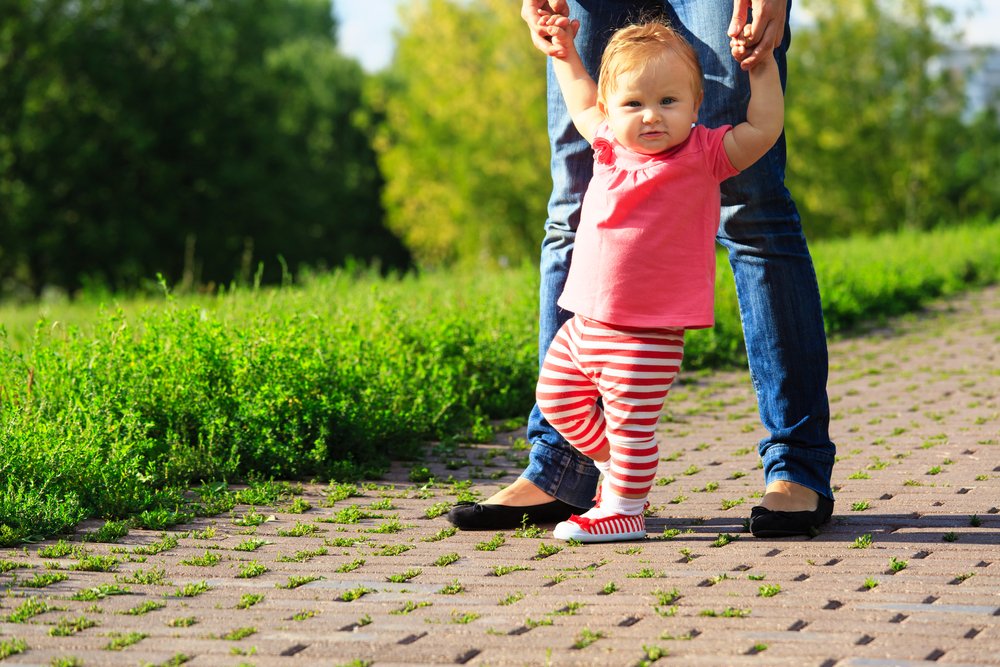Key points:
- Walking is a major developmental milestone for a child.
- Preceding walking, skills like supine kicking and pulling up are crucial.
- Walking involves complex factors like muscle strength, coordination, and posture control.
- Improvement in walking skills is a gradual process, influenced by practice and environment.
Every parent looks forward to their child’s first steps. It is a very exciting and important milestone! However, skilled walking is not something that is achieved from one day to another; it takes months to develop.
There are many other skills that your toddler will acquire before and after taking those first steps that will help them perfect their ability to walk. Actually, a walking precedent exists even in newborns and small babies, as they move their legs in an alternating pattern while laying on their backs. This is called supine kicking; it happens when your baby is aroused and it is similar to upright stepping. In fact, they both have the same pattern (one leg extends while the other one bends) and they use the same muscles to initiate the movements!
Of course, walking involves a lot more than just alternating leg movements. This is why your little one won’t be able to do it until much later on. In order to take their first steps and to walk more skillfully each time, your child will need flexibility, limb coordination, posture control, muscle strength, and motivation to get somewhere. They will have to adapt to different environments so that they can speed up, slow down, steer, and navigate while adjusting to changes in the surface, the slope, or the weight they carry, while maintaining their balance throughout all of this!
Although not all children crawl in the traditional way, they won’t wait until walking to start moving around! Their desire to move from one place to another makes them drag, pull, or propel their body in any way they can.
There will come a time when your little one will want to explore even more; they might begin to try upright forms of mobility, which can also precede their walking. All children are different! But usually, at about 9 months, they’ll start pulling themselves up to stand, holding on to furniture or to you. Your little one will need a little practice to be able to remain in this position, then they’ll even be able to stand while holding a toy or object, and then… you’ll see they build the confidence to start moving! They will cruise through the furniture or even walk while you hold both their hands.
Finally (although not really the end), your little one will take their first steps without support! This can happen at around 13 months, but keep in mind that the age range for these milestones is very variable. At first, they’ll only be able to take a couple of steps before losing balance, but they’ll keep practicing! For a while, their steps will be short, unsteady, and slow, with legs wide apart to make up for poor balance control.
With time and practice, their fluency and flexibility will improve, increasing their speed and allowing them to walk with less effort. This means that they’ll acquire more complex skills that require attention or concentration! For example, carrying an object while walking, pushing or pulling toys, stopping and squatting down to grab something in the middle of a walk, or walking backward.
Most research finds that the improvement in walking performance of most children is noticeable 3 to 6 months after they took their first steps, and they also agree that walking with adult-like fluency is achieved until about 5 to 7 years of age. So keep on practicing! Experience is what makes the most difference in the ability to walk skillfully.
As a final note, remember that all children are different, and that development is not always a linear process. Because of this, some children might show interest in standing and moving around in an upright position even before being able to crawl or move around on the floor. Some children don’t even crawl in the traditional way! The most important thing is that your little one moves around and continues exploring and learning from their environment, while building muscle strength and improving their balance control.








